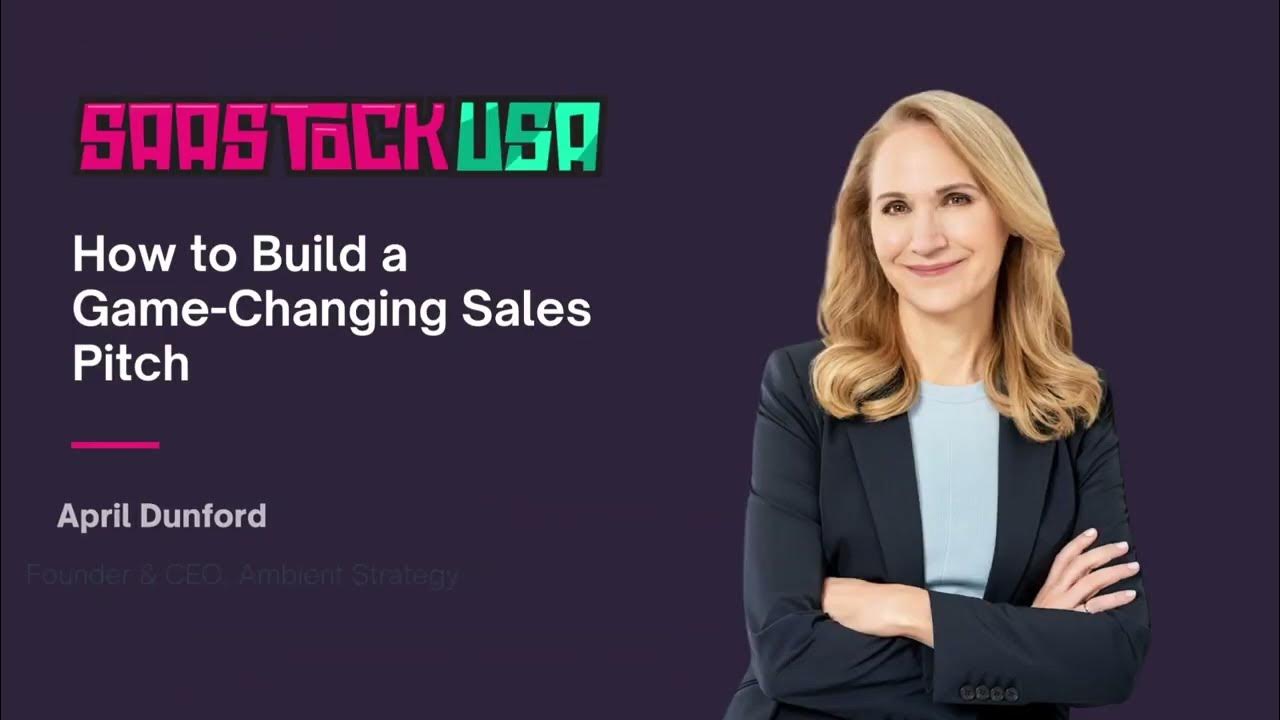How to give effective sales presentations?
Summary
TLDRIn this insightful presentation, Michael emphasizes the importance of capturing attention from the start in sales pitches. He suggests leading with a compelling demo or story, especially one that resonates with the audience's challenges. He advises against starting with company or team introductions, which can waste valuable early engagement. Instead, he recommends a personalized approach, telling a relatable story to draw in listeners, followed by a clear explanation of product features and benefits. Ending with a strong, confident statement about the value provided, and offering clear next steps, ensures a memorable and effective sales presentation.
Takeaways
- 📈 Start Strong: Begin your sales presentation with your most valuable content to capture attention early on.
- 🔍 Focus on the Audience: Understand your audience's attention span and structure your presentation to peak at the beginning and end.
- 👋 Introduce Yourself: Start with a brief introduction to establish your credibility and connect with the audience.
- 👥 Acknowledge the Room: Use a 'tour' to identify key stakeholders and gauge their interest.
- 📖 Tell a Story: Engage your audience with a story about a client's problem to make it relatable and compelling.
- 💡 Problem-Solution Approach: Frame your product or service as the solution to the problem you've introduced.
- 🛠 Highlight Features: Once the problem is established, explain how your product's features address it.
- 🔄 Close the Loop: Revisit the initial problem and demonstrate how your solution resolves it.
- 💪 End with Confidence: Conclude your presentation with a strong statement of the value your solution will bring.
- 📝 Call to Action: End with clear next steps or actions (A or B) for the audience to take, creating a sense of urgency.
- 👍 Encourage Engagement: Use a trick like counting to three before stating the value to create a dramatic pause and prompt questions.
Q & A
What is the key to an effective sales presentation according to Michael?
-The key to an effective sales presentation is to capture the audience's attention at the beginning and end, placing the most valuable content at the start, and ending with a strong statement of value.
Why is it important to start a sales presentation with the most valuable content?
-Starting with the most valuable content is crucial because people tend to remember the first few minutes and then their attention span decreases, so it's best to capture their interest early.
What common mistake do companies make when they start their presentations?
-Companies often start by introducing themselves and their team, which can waste the most critical part of the presentation where the audience's attention is highest.
Why should you ask for a 'little tour' of the room during your presentation?
-Asking for a 'little tour' helps you to identify who is important in the room, which can be useful for tailoring your presentation to the key decision-makers.
What technique does Michael suggest to make people pay attention during a presentation?
-Michael suggests telling a story, specifically one about another client's problem, as this makes the audience relate and pay attention because they see it as relevant to their own situation.
What is the purpose of telling a story about another client's problem at the start of a presentation?
-The purpose is to create a connection with the audience by showing that you understand their problems, which makes them more receptive to your solution.
How should you explain the features of your product in a sales presentation?
-You should explain the features of your product after establishing the problem and how your company was founded to solve it, ensuring that the features are presented in a context that matters to the audience.
What is the significance of closing the loop in a sales presentation?
-Closing the loop means revisiting the problem you introduced at the beginning and showing how your product or service solves it, which reinforces the relevance and value of your offering.
How should you end your sales presentation to leave a strong impression?
-You should end with a strong statement of confidence in the value your solution will bring, and avoid weak or humorous closings that may undermine the seriousness of your pitch.
What trick does Michael recommend to effectively conclude a sales presentation?
-Michael recommends showing a slide with the next two actions (A or B), pausing dramatically, and then stating your confidence in the value of your solution, which encourages engagement and questions.
What should you avoid saying at the end of your presentation to maintain professionalism?
-You should avoid making light-hearted or self-deprecating remarks about the presentation's length or the audience's attention, as this can undermine the impact of your message.
Outlines

This section is available to paid users only. Please upgrade to access this part.
Upgrade NowMindmap

This section is available to paid users only. Please upgrade to access this part.
Upgrade NowKeywords

This section is available to paid users only. Please upgrade to access this part.
Upgrade NowHighlights

This section is available to paid users only. Please upgrade to access this part.
Upgrade NowTranscripts

This section is available to paid users only. Please upgrade to access this part.
Upgrade NowBrowse More Related Video

How To Start A Pitch Or Presentation: Updated!

How to Use LinkedIn to Get Clients - LinkedIn Lead Generation (LinkedIn Marketing)

How to Build a Game-Changing Sales Pitch with April Dunford, Ambient Strategy at SaaStock USA 2024

Lecture 15 Attention Getters [28:07]

Why every Cleo Abram video goes viral

Kevin Costner On Future Of His Four-Part ‘Horizon' Series
5.0 / 5 (0 votes)